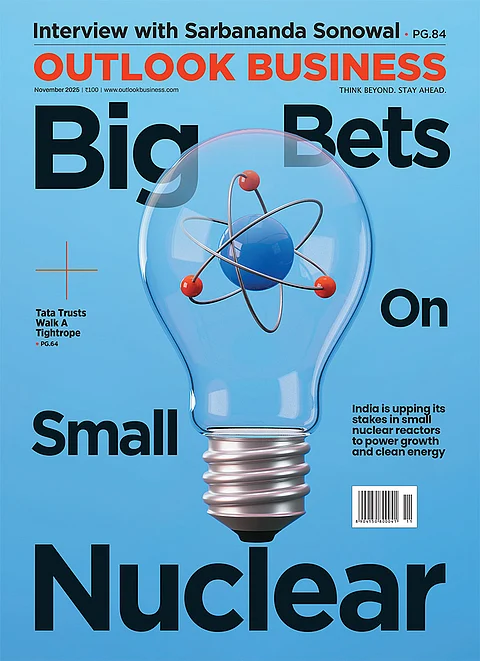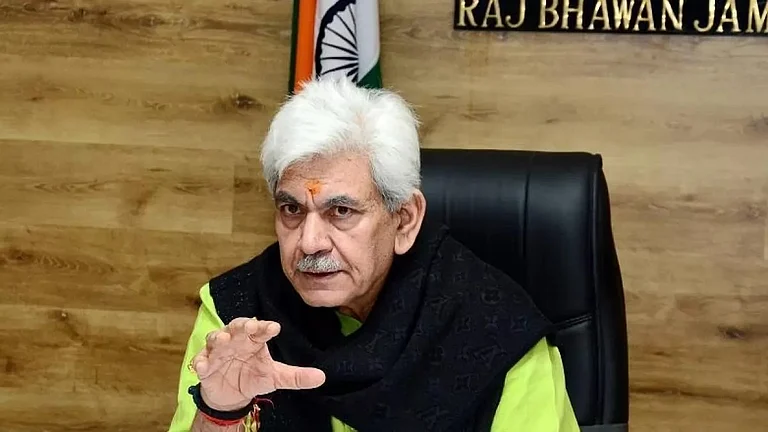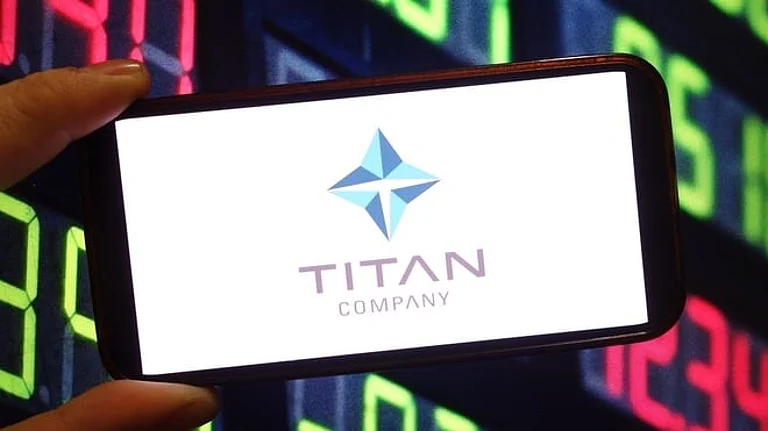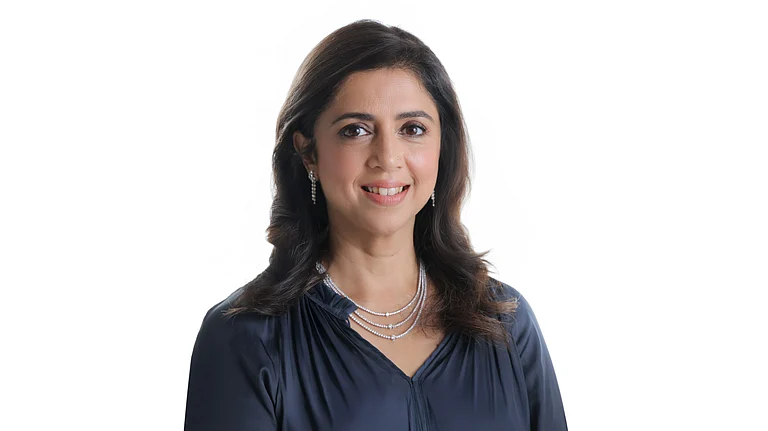
CaratLane plans to open 10–15 new stores every quarter, after ending the September quarter with 342 stores.
The brand continues to expand rapidly across markets as part of its omnichannel strategy under Titan.
CaratLane is outpacing Titan’s overall jewellery growth, delivering 22%, 32% and 25% sales growth in the last three quarters.
CaratLane, the affordable, lightweight jewellery brand of Titan, plans to add 10 to 15 stores each quarter, according to Chief Operating Officer (COO) Atul Sinha. The brand closed the September quarter with 342 stores and added 13 more stores in the festive month of October.
The omnichannel brand is one of Titan's fastest-growing segments in terms of sales growth. While Titan’s overall jewellery sales grew 20% in Q4FY25, 17% in Q1FY26 and 19% in Q2FY26, CaratLane delivered much stronger numbers at 22%, 32% and 25% respectively.
"We continue to see a large opportunity beyond the metro cities, as there are many towns where we still don’t have a presence. We believe we can keep expanding into these markets, so we plan to continue opening around 10 to 15 stores each quarter,” Sinha told Outlook Business in an exclusive interview.
He added that from a demand perspective, metro cities are still the largest cohort for the brand, as "more than half our business comes from the six metro cities."
"I would attribute this to three reasons. One, diamond Q&B is already adopted by many people in these metros. Second, we have a very large presence in cities like Delhi and Bangalore, we have over 30 stores in each. Third, we’ve been present in these cities for longer, so people are more aware of our brand and have been buying from us over time," Sinha said.
But from a growth perspective, the brand is looking more at tier 2 and tier 3 cities because these markets have many more diamond jewellers in the unorganised sector.
"The thing about tier 2 and tier 3 markets is that diamond penetration is much lower than in metro cities. So in a way, we have to develop these markets, we can’t expect that if we open a store, people who already buy diamonds will automatically come to us. Some do, but in many cases, we are really building the market," he said.
Adding that they look for a long-term investment perspective in a tier 2 or tier 3 city, he said they would "need to start educating customers and building the whole concept of modern jewellery, because many of them are first-time buyers."
CaratLane operates with both franchise and company-run stores.
"Every time we open a store with a franchisee, our investment is lower because the franchisee puts in that investment. And in the model where the franchisee buys the inventory, it is essentially the franchisee’s investment, not ours, since even the merchandise and tools are purchased by them," the CaratLane COO added.
Store Sales Still Outpaces Online
In the second quarter, CaratLane delivered strong performance with 32% year-on-year domestic growth to ₹1,072 crore, supported by robust demand for solitaires and a 24% yoy rise in the studded portfolio. Promotions bundling coins improved conversions and ticket sizes and lifted EBIT to ₹109 crore with a 10.1% margin. Overall growth stood at 25% year-on-year.
The company, founded in 2008 by Mithun Sacheti and Srinivasa Gopalan, was initially a digital-first jewellery brand. Tata Group's watch and jewellery unit Titan acquired over 98% stake in the company in two phases in 2016 and 2023.
It has since become an omnichannel brand. According to its COO, online today contributes less than 10% of the brand's total revenue.
"But I would say that somewhere between 80% to 90% of the customers who come to our stores have actually visited our website, seen our designs, and got a sense of the kind of jewellery we have before coming to the store," Atul Sinha said, adding that consumer behaviour in the segment is such that people like to experience the product before buying it.
"People today order iPhones online, and an iPhone can cost a lakh or more, but they know exactly what they’re going to get, there’s no surprise. Whereas in jewellery, each piece is different, each piece is unique, and there is no standard version. That’s why the need to physically see the piece becomes very important,” Sinha said.
While the brand continues to hold a leadership position in the middle-market segment it operates in, there is rising competition from other jewellers entering the field, including from Kalyan Jewellers’ Candere, and design-led jewellery brands such as Bluestone, Melorra and Giva.
"I think competition is good," said Sinha. Adding, "We can’t become complacent or assume anything. We are constantly investing time and effort to ensure we are making the best designs and offering customers great value—not just in terms of price, but with high-quality materials and beautiful craftsmanship."
He also claimed that CaratLane, for now, is "the single largest brand, more than twice the size of our biggest competitor."
Global Expansion Amid US Tariffs
CaratLane currently has just one operational international store in the US’s New Jersey, which it opened last year. Sinha said they also plan to open another store in Dallas, Texas in December.
"Store is almost ready. We are just waiting for the final approvals," Sinha said.
However, he also highlighted the risks the brand faces amid tariffs imposed by US President Donald Trump.
"We continue to be optimistic about the long-term opportunity in the US market. But having said that, because of the unprecedented tariffs that have been imposed, we are being cautious. Our New Jersey store and our online business still saw their best-ever festive period in the US—much like India—despite the tariffs. But we are holding back any major investments until we get more clarity on what happens with tariffs," Sinha said.
CaratLane or Titan is not alone in this. India currently faces 50% reciprocal tariffs from the US and the gems and jewellery sector is one of the worst-hit industries. According to the Gems and Jewellery Export Promotion Council (GJEPC), in October 2025 alone, India’s global exports plunged by 30.57% year-on-year to ₹19,172 crore.
CaratLane's COO said that tariffs have made them "rethink our global approach."
"Until now, our focus was primarily on the US, but this situation has indicated that it’s better for us to diversify. We are looking at markets with a strong Indian diaspora, because that’s our natural entry point—they already know our brand," Sinha said.
However, he added that they don't have any immediate plans for opening stores, but they are building online business in markets like Australia, the UK, West Asia and Singapore.
"Once we see traction and steady demand, that gives us the confidence to consider opening physical stores as well," he added.
When asked about CaratLane’s role in Titan's recent acquisition of UAE's Damas, Sinha said he would be "unable to comment".
"It’s too early; we are still in discussions and trying to understand what our positioning will be. All I can say for now is that we see the Middle East as a strong opportunity, and we would love to build in that market at the right time,” he added.































